Designing a child’s bedroom in a small space can be a delightful challenge. It’s all about maximizing functionality without sacrificing style. The key lies in smart layouts that make the most of every square foot. In this guide, we explore three brilliant children’s bedroom layouts specifically tailored for small rooms, each incorporating innovative ideas to create a space that is both practical and enchanting.
Vertical Wonderland: Maximizing Height in Small Spaces

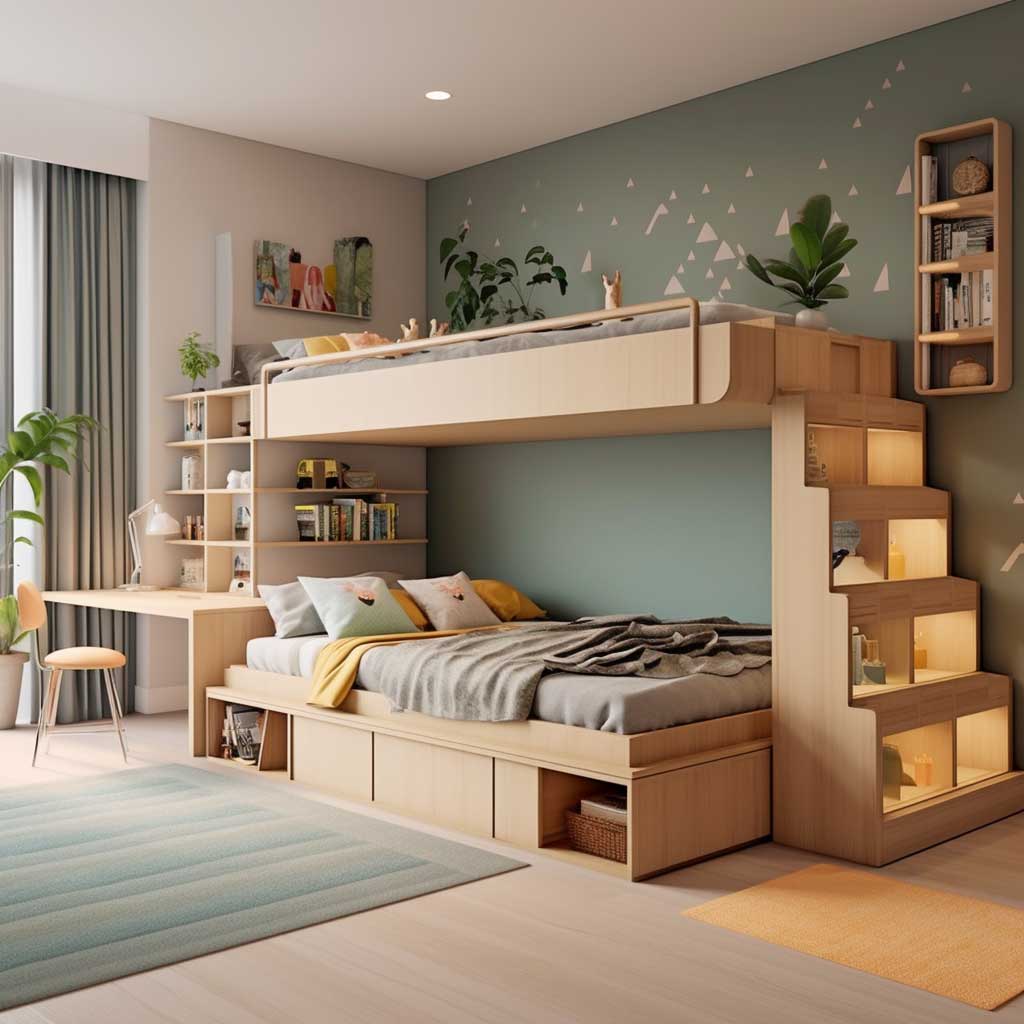


When it comes to children’s bedroom designs for small rooms, the challenge is often maximizing space without compromising on style and functionality. The ‘Vertical Wonderland’ theme is a testament to this challenge, offering innovative solutions that utilize vertical space efficiently, transforming a cramped room into a spacious and magical environment for children.
In small children’s bedrooms, the key to creating more space is to think vertically. Utilizing the height of the room with tall furniture pieces like loft beds and high shelves can dramatically change the perception of space. This approach not only frees up valuable floor area but also adds an element of fun and adventure.
A loft bed is a cornerstone of the Vertical Wonderland theme. By elevating the sleeping area, it opens up the floor for other activities. Underneath the bed, one can fit a study desk, a play area, or even a cozy reading nook, effectively doubling the usable space in the room.
Storage is a critical aspect of children’s bedroom designs, especially in small rooms. Vertical storage options like wall-mounted shelves, tall bookcases, and hanging organizers can keep clutter at bay while adding to the room’s aesthetic appeal. These solutions make the most of the available vertical space, keeping the room organized and spacious.
Decor in a Vertical Wonderland theme should enhance the sense of height. Wall murals with vertical motifs like trees or skyscrapers, hanging decorations, and vertically-oriented artwork can draw the eye upwards, making the room feel larger and more open.
In any design focusing on vertical space, especially in children’s bedrooms, safety is paramount. Ensuring that loft beds have sturdy railings and that storage units are securely anchored is crucial. Additionally, frequently used items should be easily accessible to avoid the need for constant climbing.
The Vertical Wonderland theme offers a creative and practical approach to children’s bedroom designs for small rooms. By capitalizing on vertical space, these designs can transform a small, cramped space into a room that feels spacious, functional, and magical, perfectly suited for a child’s growth and imagination.
Multifunctional Magic: Compact and Creative Solutions
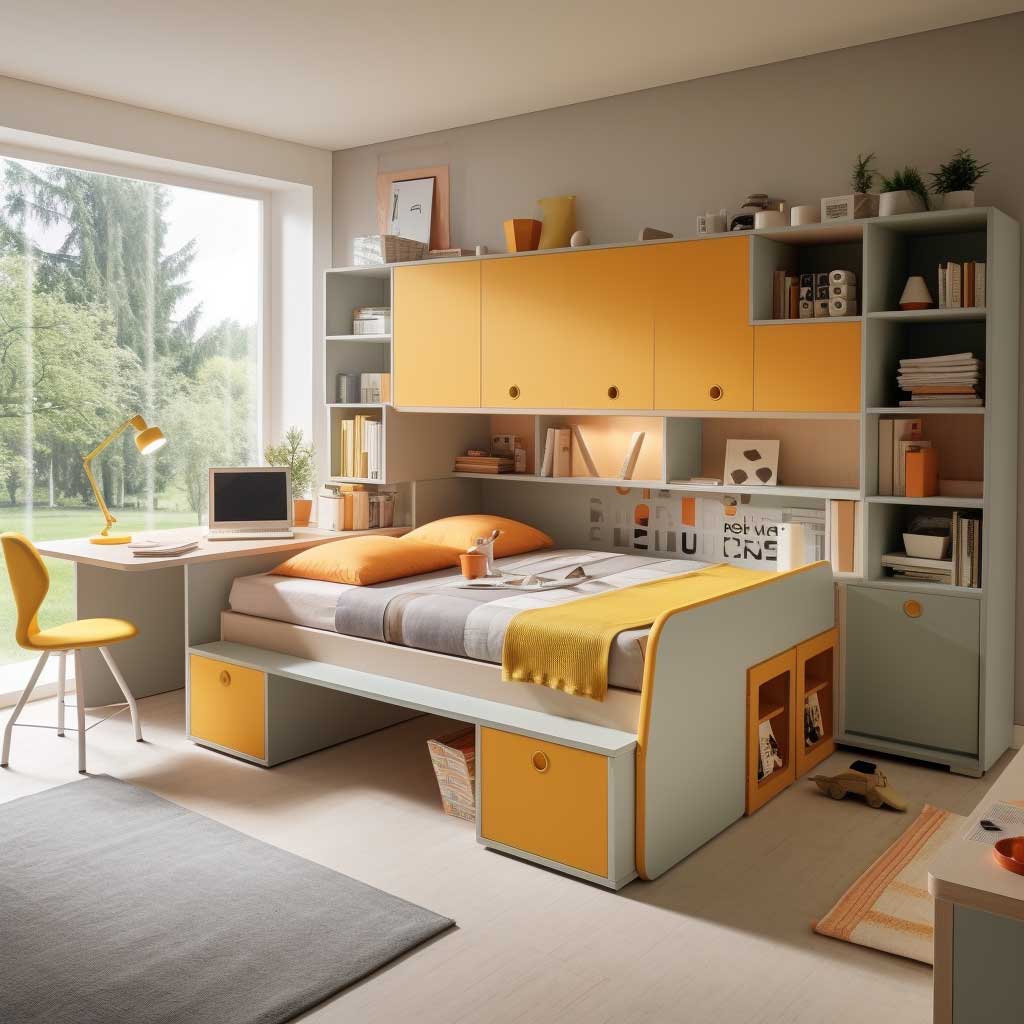
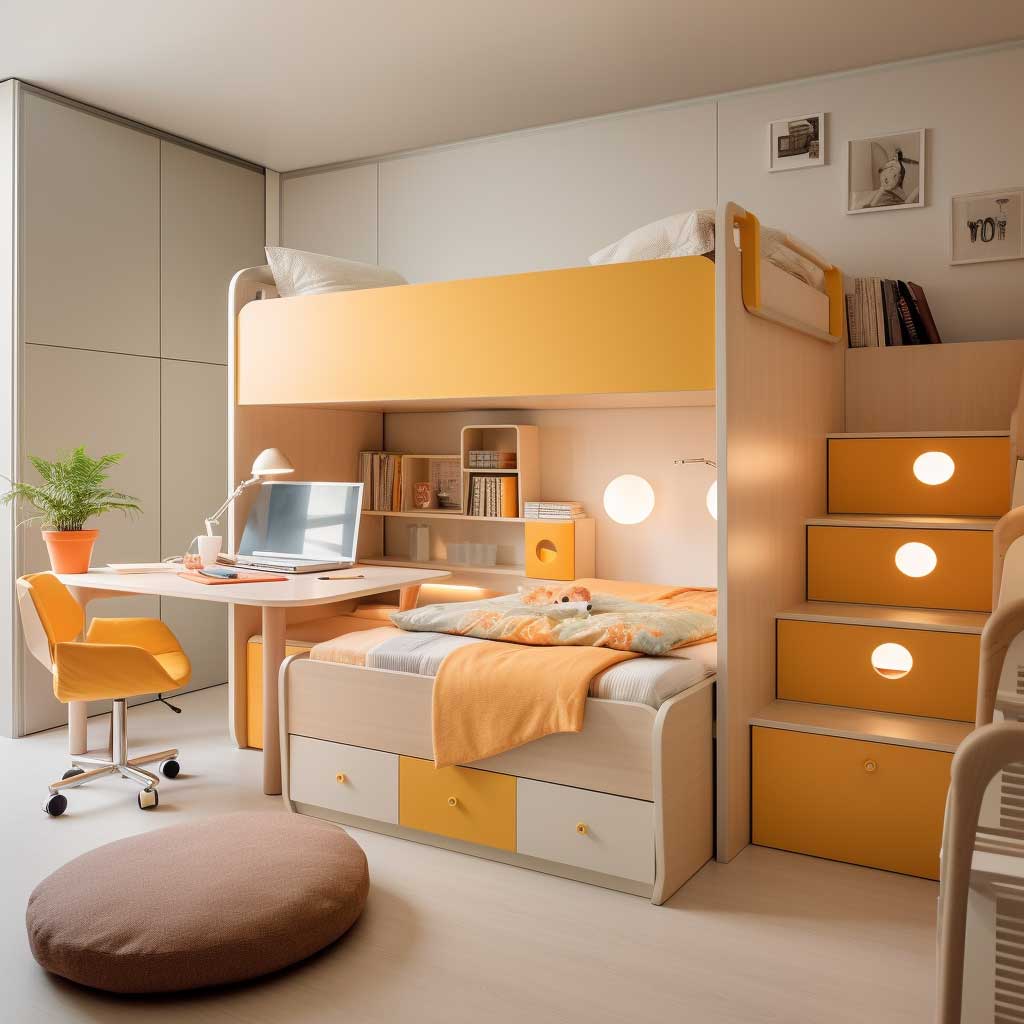
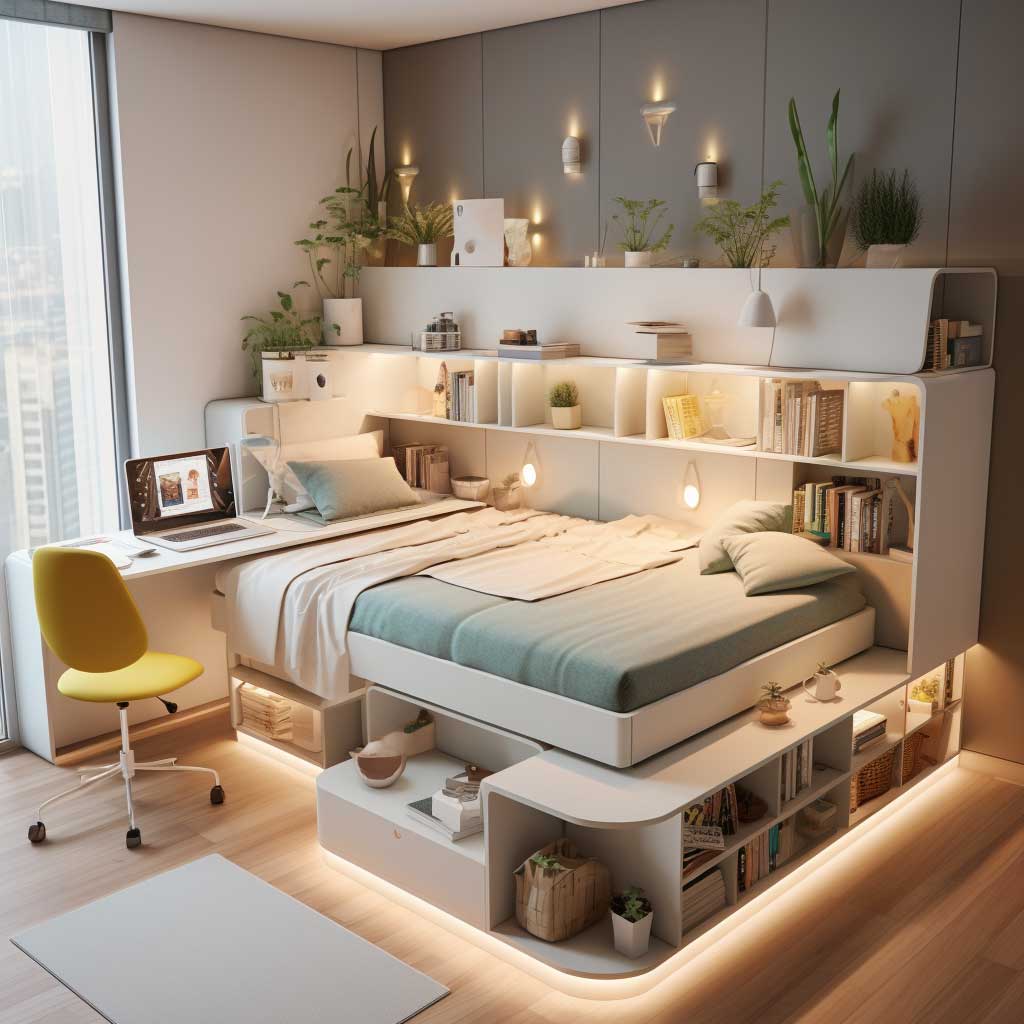

In the realm of children’s bedroom designs for small rooms, the concept of multifunctionality emerges as a crucial element. The theme ‘Multifunctional Magic: Compact and Creative Solutions’ embraces this idea, showcasing how versatile furniture and clever design can transform a cramped space into a functional and stylish haven for children.
In small bedrooms, every piece of furniture should serve multiple purposes. Beds with built-in storage, desks that fold away, and seating with hidden compartments are not just space savers; they’re essential for keeping the room organized and functional. This approach allows for a variety of activities in a limited space, from sleeping and studying to playing and relaxing.
In a multifunctional children’s bedroom, the bed often becomes the central feature. Options like loft beds with integrated desks or daybeds with pull-out storage drawers provide multiple functions within a single piece of furniture, maximizing the use of space.
Effective storage solutions are vital in children’s bedroom designs for small rooms. Wall-mounted shelves, under-bed storage, and multi-purpose units can keep belongings neatly organized. Seating options like ottomans with storage or benches with built-in shelving can add functionality without occupying extra space.
A key aspect of multifunctional design is flexibility. Furniture that can be easily moved or reconfigured allows the room to adapt to different needs and activities. This adaptability is particularly important in a child’s bedroom, where the space might need to change as they grow and their needs evolve.
In a multifunctional room, decor should complement the room’s versatile nature. Choosing a cohesive color scheme and simple, unobtrusive decorative elements can help maintain a sense of order and spaciousness.
The ‘Multifunctional Magic’ theme is a perfect response to the challenges of children’s bedroom designs for small rooms. By focusing on furniture that serves multiple purposes and designing for flexibility, these rooms can be transformed into efficient, stylish, and enjoyable spaces that meet all the needs of a growing child.
Open and Airy: Minimalist Approach to Small Bedrooms
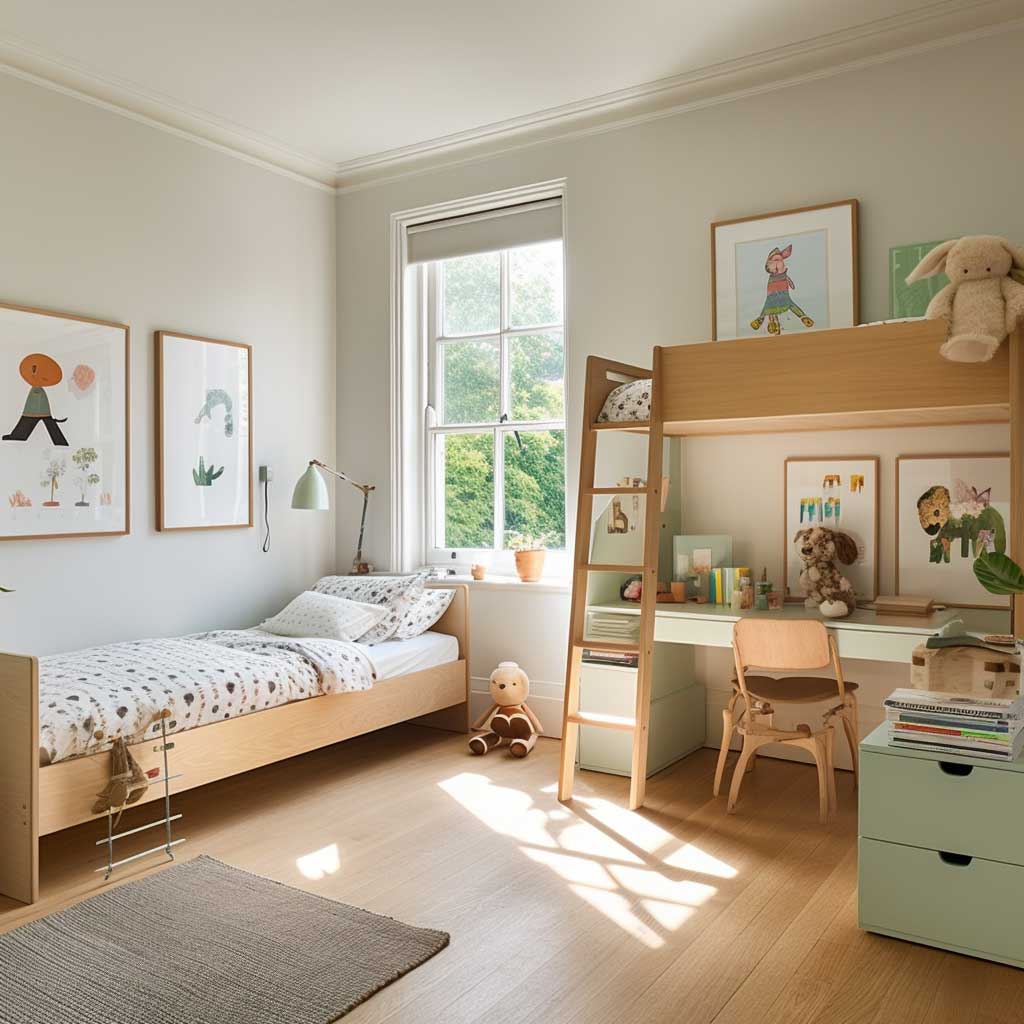



The minimalist approach in children’s bedroom designs for small rooms is about creating a sense of spaciousness and calm by keeping the decor simple and functional. The ‘Open and Airy: Minimalist Approach to Small Bedrooms’ theme embodies this philosophy, offering a serene and clutter-free environment that is perfect for rest, play, and study.
Minimalism in a small bedroom is about focusing on the essentials. This means selecting furniture and decor that serve a purpose and avoiding unnecessary clutter. A minimalist room uses space efficiently, creating a feeling of openness and tranquility.
In a minimalist children’s bedroom, furniture should be simple, with clean lines and a practical design. A basic bed, a streamlined desk, and some open shelving can fulfill most needs without overcrowding the room. The key is to choose pieces that are proportionate to the size of the room and offer maximum functionality.
A neutral color palette works best in a minimalist design, as it helps to create a peaceful and airy atmosphere. Soft whites, light greys, and pastels can make the room feel larger and brighter. Textures should be used sparingly but thoughtfully to add warmth and comfort.
Good storage is essential to maintain the minimalist look. Hidden storage, like drawers under the bed or built-in closets, can keep the room tidy and free from clutter. The idea is to have a designated place for everything, making it easy to keep the room organized.
In a minimalist bedroom, decor should be kept to a minimum. A few carefully chosen items, such as a piece of art, a plant, or a statement lamp, can add personality to the room without overwhelming it.
The ‘Open and Airy’ minimalist approach is an effective solution for children’s bedroom designs in small rooms. By focusing on simplicity, functionality, and a clutter-free environment, this theme creates a space that feels spacious, calm, and conducive to a child’s well-being and creativity.
Creating a functional and stylish bedroom in a small space is entirely possible with the right layout. These three designs demonstrate how you can use vertical space, multifunctional furniture, and a minimalist approach to overcome space constraints. Each layout offers a unique solution, ensuring that even the smallest rooms can be transformed into a comfortable, enjoyable space for children.












